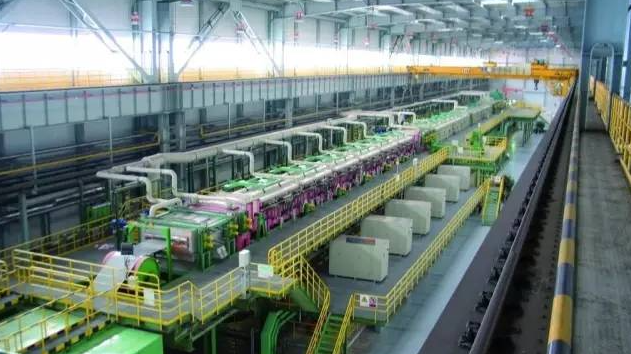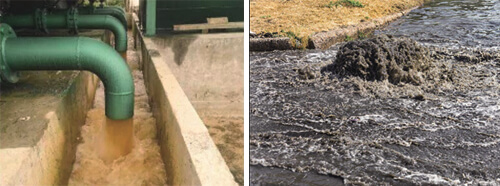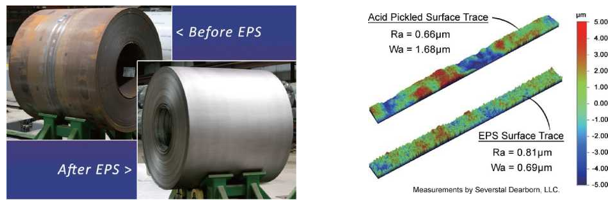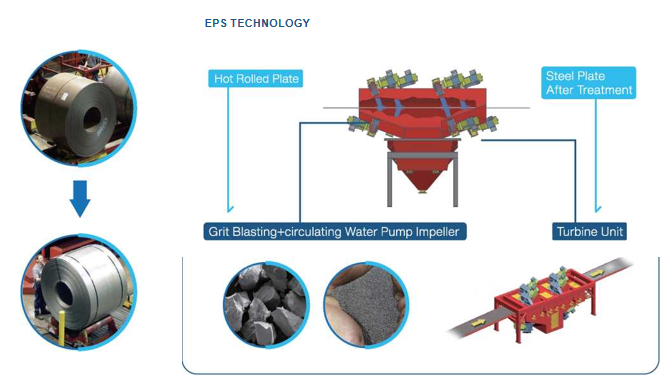For a long time, the surface treatment method of hot-rolled coils has mainly been pickling technology. However, pickling has unavoidable shortcomings, that is, it is very harmful to personnel, equipment and the environment, and the cost of production operation and maintenance remains high. For this reason, the discussion of developing a new technology and process has been researched and discussed among industry experts. It has been proposed successively, induction heating dephosphorization, pressure roller brush dephosphorization, high-pressure water dephosphorization, coil electrification dephosphorization in acid tank And new processes such as high-pressure jet phosphorus removal.
 Figure 1: Surface treatment of hot-rolled coils
Figure 1: Surface treatment of hot-rolled coils
Although the products after pickling are vigorously processed, the pollution to the environment is only reduced and does not stop.
 Figure 2: Environmental Pollution
Figure 2: Environmental Pollution
Although many new surface treatment processes for hot-rolled coils have been proposed, few of them have been popularized and applied. The main reason is that many shortcomings have been found in practice. An advanced and mature pickling has successfully solved the above problems. It That is - EPS (Eco Pickled Surface).
EPS (Eco Pickled Surface)
EPS (Eco Pickled Surface) is a new and environmentally advantageous technology began in 2006 to remove the oxide Layer formed during hot rolling of flat rolled steel.
The basic principle is that EPS accomplishes mechanical removal of scale using a unique "slurry blast" technology. EPS provides important advantages in flexibility and simplicity of operation over Conventional Acid Pickling by avoid pickling, shot blasting, painting and other pretreatment processes to achieve green and clean production.
 Figure 3: Comparison chart
Figure 3: Comparison chart
EPS is the Green Steel Choice.
EPS pickling is safe and recognized as environment-friendly. Instead of caustic acids, EPS uses carbon tempered steel gritz available world-wide, mixed with ordinary water. It continuously recycles and re-uses these ingredients.
EPS vs. Acid Pickling——Resistance to Rusting
By contrast, EPS Leaves no chloride salts. In addition, additives are used in the EPS system slurry solution to reduce "stains" on the finished strip. This additive contains water-based rust inhibitor. This water-based rust inhibitor has no effect on paint performance and greatly enhances the rust resistance of EPS.
 Figure 4: EPS processing process
Figure 4: EPS processing process
After ESP-processed material - whether dry or with oil applied - is GUARANTEED to remain free of rust Longer than Conventional Acid Pickling steel with a medium coat of oil, when handled in the same manner.
 Figure 5: EPS TECHNOLOGY
Figure 5: EPS TECHNOLOGY
EPS hot-rolled steel strip promotion field
Target areas: replace pickling, shot blasting, painting and other pretreatment processes, and improve the working environment.
Spec (Thickness * Width) | Strength Range |
| 1.2-7.0mm*800-1630mm | σb ≤ 340 Mpa |
| 1.2-6.0mm*800-1630mm | 340 M < σb ≤ 400 Mpa |
| 6.0-7.0mm*800-1500mm | |
| 1.2-6.0mm*800-1630mm |
440 M < σb ≤ 590 Mpa
|
| 1.2-3.5mm*800-1630mm |
590 M < σb ≤ 780 Mpa
|
| 3.5-5.0mm*800-1430mm | |
| 1.2-3.0mm*800-1200mm |
780 M < σb ≤ 980 Mpa
|
Figure 6:Hot rolled pickling products
GMW | WSS-M1A367(Ford) | MS | EN | Q/BQB |
| HR340 | A46 | LAH340T410T | S315MC | QStE340TM |
| HR380 | A47 | LAH380T450T |
S355MC
| QStE380TM |
| HR420 | A48 | LAH420Y480T |
S420MC
| QStE420TM |
| HR460 | - | - |
S460MC
| QStE460TM |
| HR500 | A49 | LAH500Y560T |
S500MC
| QStE500TM |
| HR550 | A50 | LAH550Y620T |
S550MC
| QStE550TM |
| - | - | - |
S600MC
| QStE600TM |
| - | - | - |
S650MC
| QStE650TM |
| - | - | - |
S700MC
| QStE700TM |
Figure 7:Hot rolled steel plates and strips for automotive structure
Composition of surface treatment production line
The main equipment of the surface treatment line consists of the entrance coil transport trolley, uncoiler, shearing machine, straightening machine, surface treatment unit (three sets), air knife, tension pinch roller, coiler, exit coil transport trolley, exit stepper Beams, balers, weighing machines, inkjet printers, waterproof packaging lines, etc.
The surface quality is better than the pickled board, the surface roughness is more uniform, and it is more suitable for the painting process.
It can realize the weakening of the scratch-es on the surface of the steel plate that cannot be achieved by the pickling process.
 Figure 6: Schematic diagram of the composition of the surface treatment production line
Figure 6: Schematic diagram of the composition of the surface treatment production line
- Replace the pickling process, no pollution and subsequent acid treatment meet environmental protection requirements, and achieve sustainable development.
The steel plate after the surface treatment will not rust after being stored for 180 days under normal circumstances.
The treatment of pickling waste has always been a problem, but if all pickling pools can be replaced by a method similar to EPS, it will be of great help to protect our living environment, although the pickling waste treatment is now There are strict regulations, but there are still some unscrupulous businessmen who use methods that destroy the environment in order to save money, so we must actively promote this green production process.